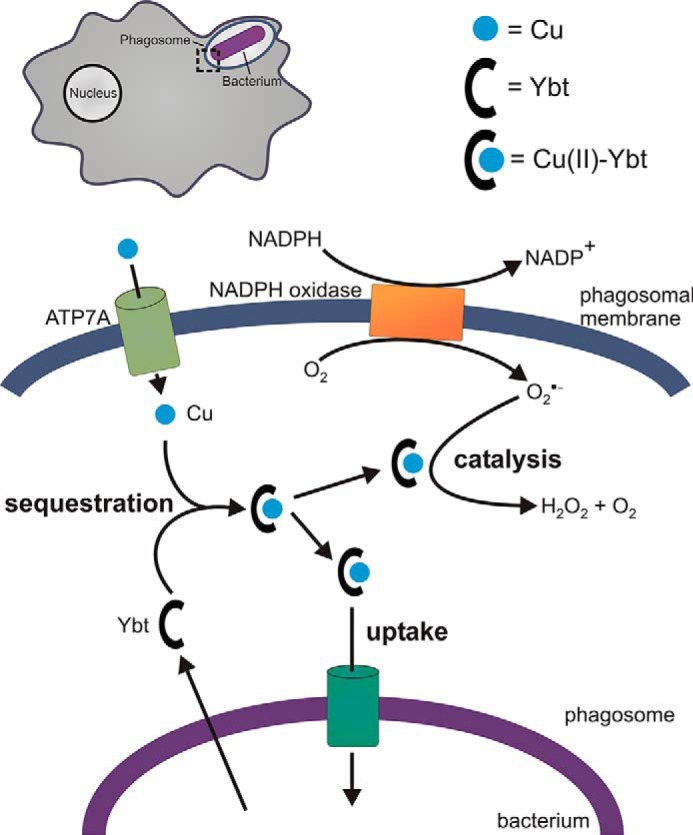FIGURE 3.

Copper-binding siderophore functions at the host-pathogen interface. Within the phagosomal compartments of host phagocytic cells (upper left), yersiniabactin may protect bacterial pathogens by sequestering toxic copper ions translocated by ATP7A into the phagosome (25, 45). The resulting Cu(II)-Ybt complex may further protect the host by catalyzing superoxide dismutation to counter superoxide-based host defenses (61). In phagosomal or non-phagosomal environments characterized instead by copper scarcity, E. coli may import Cu(II)-Ybt as a nutritional copper source.
